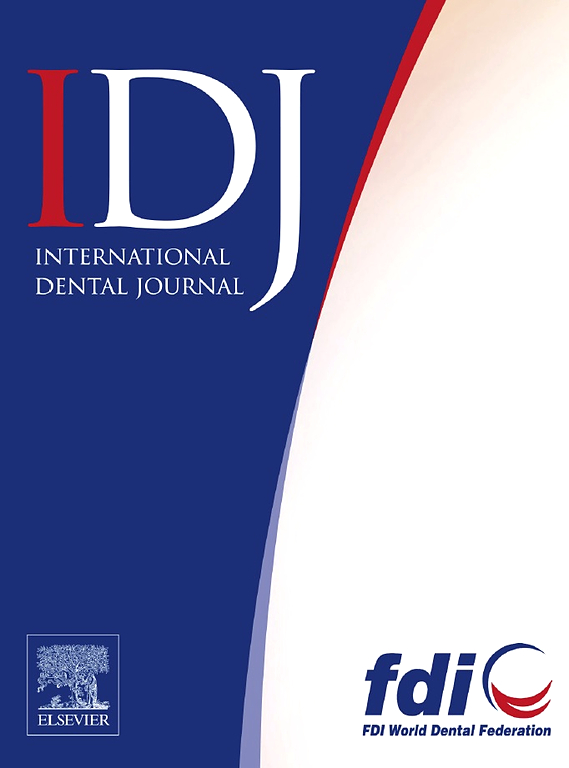Hydroxyapatite-Fluoride Toothpastes on Caries Activity: A Triple-Blind Randomized Clinical Trial
IF 3.2
3区 医学
Q1 DENTISTRY, ORAL SURGERY & MEDICINE
引用次数: 0
Abstract
The study aimed to evaluate the remineralizing effect of hydroxyapatite and fluoride containing toothpastes (HAF's) on active caries lesions compared to a fluoridated standard toothpaste in pre/schoolchildren. A total of 610 children (4-5 and 6-7 years old) were enrolled. Four toothpastes, 2 containing fluoride-substituted hydroxyapatite (HAF) (1000 and 1450 ppmF) and magnesium-, strontium-, carbonate-substituted hydroxyapatite, in a chitosan matrix and 2 Mono fluoridated toothpastes (NaMFP) (1000 and 1450 ppmF), were randomly administered for 24 months. The children were instructed to brush for 2 minutes 3 times/day. Caries activities, by clinical surface features, were recorded at baseline and 12- and 24-month follow-ups. A per-protocol analysis was adopted, thus excluding children lost to follow-up. Overall, 518 children completed the trial. Baseline comparisons revealed no significant differences in primary teeth caries rates between HAF and NaMFP groups, both for enamel and dentinal lesions. By the end of the study, the HAF group exhibited a statistically significant reduction in enamel lesions compared to the NaMFP group (P < .01). Of the 40 partially active lesions at baseline in the HAF group, 13 were inactive at the 2-year follow-up. Of the active lesions in the HAF group (n = 78) at baseline, nearly 3-quarters (n = 58) were inactive at the follow-up. The difference between the 2 groups (HAF vs NaMFP) in terms of change of status in primary dentition (active at baseline and inactive at follow-up) was statistically significant (P = .04). Regarding dentinal lesions, both groups presented similar percentages of inactive lesions that were filled at the end of follow-up (P = .08). However, the HAF group demonstrated a higher number of inactivated lesions compared to the NaMFP group. The toothpaste containing biomimetic hydroxyapatite and fluoride may be better for children with active caries lesion in primary dentition.
求助全文
约1分钟内获得全文
求助全文
来源期刊

International dental journal
医学-牙科与口腔外科
CiteScore
4.80
自引率
6.10%
发文量
159
审稿时长
63 days
期刊介绍:
The International Dental Journal features peer-reviewed, scientific articles relevant to international oral health issues, as well as practical, informative articles aimed at clinicians.
 求助内容:
求助内容: 应助结果提醒方式:
应助结果提醒方式:


